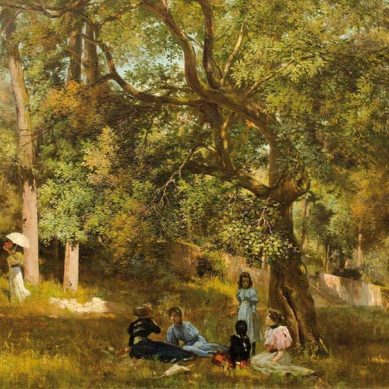You searched
Painter
Mario Broglio
Are you interested in the sales or the purchase of his artworks?
We buy works of this artist
and of other painters and sculptors from the 16th century to the first half of the 20th century
The Berardi gallery offers a free and without obligation service for evaluation of ancient and modern art . To find your way in the art market, very complex and full of nuances, it is better to rely on a professional consultant who can answer fast and concretely to your needs. The clarity of the answers will resolve effectively the need to estimate or sell an asset.
Contact us immediately without commitment
Answers also in 24 hours:
Mario Broglio
Mario Broglio
Mario Broglio was born in Piacenza in 1891. He was a young man with an imaginative and restless character and soon left Piacenza for Rome to attend the Academy of Fine Arts in the capital. Here he came into contact with Cipriano Efisio Oppo, Amerigo Bartoli and Francesco Trombadori, with whom a stimulating cultural exchange and deep friendship was born.
His first trips to Europe began, with significant stops in Paris and Cannes, thanks to which he kept abreast of the latest international artistic developments.
There is very little evidence of Mario Broglio’s beginnings, but he certainly took his first steps in the environment of the Roman Secession, and then approached Futurism, although he remained autonomous and never joined the movement.
The post-war period and career in journalism
In the post-war period, his career in the world of journalism and criticism took off. He began writing for newspapers such as Giovanni Papini’s ‘Il Tempo’ in Rome and the ‘Giornale del Mattino’ in Bologna directed by Maraini.
These were years of ferment and great changes. He spent most of his time between the Caffè Aragno and Antonio Giulio Bragaglia’s Gallery in Via Condotti, where he met Edita Walterowna von Zur-Muehlen in 1917, one of the most important people in his life, both personally and artistically. Edita, a Baltic painter born in Smiltene, arrived in Rome in 1910 after a Parisian education and became Mario’s companion first and then his wife. From an artistic point of view, the association between the two would result in a true four-handed work that would characterise their subsequent artistic production.
The birth of “Valori Plastici”
Towards the end of the First World War, between 1918 and the beginning of 1919, Rome regained its cultural life and became one of the European capitals of the heated ‘avant-garde – return to order’ debate, the latter supported in particular in the pages of the magazine ‘Valori Plastici’ founded by Mario Broglio in 1918, of which 15 issues were published until 31 October 1921.
The artists who wrote in the magazine and were the spokesmen for this return to order were Giorgio de Chirico, Carlo Carrà, Giorgio Morandi, Arturo Martini, Roberto Melli, Riccardo Francalancia, Edita Broglio and Alberto Savino (as a critic not yet as a painter).
The movement is inspired by antiquity: everything is characterised by an immanent and monumental classicism, the ‘plastic values’ are those of the 14th century and the Italian Renaissance. The magazine openly promotes Metaphysics and a broad international debate on the intertwining of tradition and modernity.
In support of this idea and of the artists of the Valori Plastici group, Mario Broglio also devoted himself to the organisation of two major exhibitions: the first in 1921 in Berlin and then in Hannover and Dresden; and the second at the Florentine Spring Exhibition in 1922 where the group received official artistic consecration.
After this exhibition interlude, he became almost totally interested in publishing monographs of artists, especially those of the 14th and 15th century Italy: the most famous are Giotto by Carlo Carrà and Piero della Francesca by Roberto Longhi.
In 1927 Mario and Edita married and moved to Paris, where they became close to Alberto Savinio, the artists of ‘Forces Nouvelles’ and were fascinated by the artistic research of André Derain.
The artist couple lived between Paris, Rome, Cannes, Capri and the Sabine countryside, and Mario Broglio continued his critical work, editing the series ‘Valori Plastici’ for Hoepli.
Mario Broglio’s Painting at the Quadriennali in Rome
In 1933, Oppo reached Mario Broglio in Paris to invite him to the Second National Art Quadrennial in Rome, where he exhibited nine works in 1935: Marina meridionale, La contemplazione, La sorgente, La roccia and four Nature morte.
He returned to the next edition of the Quadriennale, in 1939, with a personal room exhibiting 11 works including Il romanzo (The Novel), Rusticana (Rusticana), Ritratto di Miss M. K, La donna e il mare (Portrait of Miss M. K), and Autoritratto (Self-portrait).
Finally, he took part in a final Quadriennale, the Fourth, with three works: two still lifes and The Bath in the Park.
The canvases on display reflect the stylistic programme that Mario Broglio had advocated in his last years: the figures are frozen, suspended, in a timeless dimension, whose landscapes and atmosphere recall the 14th and 15th century Italy, in a true dialogue with antiquity.
Mario Broglio died in 1948, aged only fifty-seven. Two years after his death, a major retrospective exhibition was organised at the Venice Biennale, featuring 24 works, created between 1910 and 1945, which was presented by Carlo Carrà.





